#wolf gods
Text
Werewolf Fact #69 (dude!) - Ancient Egypt
Well, I thought this month would be about something else, but my patrons spoke differently! And I always listen to my patrons when it comes to folklore facts.
So, without further ado, let’s finally get back to werewolf facts! This is a big one, as it’s a lifelong favorite topic of mine!
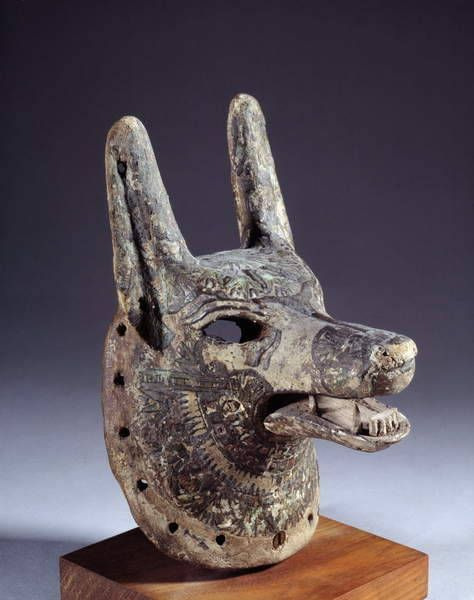
An ancient Egyptian mask worn by a priest during rites performed for the dead, who would have “taken on the aspect” of the wolf-headed god Anubis
Let me just open by saying that I absolutely love ancient Egypt. It’s fascinated me since I was a small child and I was reading a tiny children’s book about cats, and ancient Egypt was discussed. Naturally, when I found out about Anubis, I was even more interested. Then came games like Age of Mythology and many movies... especially The Mummy (1999), of course. Anyway!
Ancient Egypt didn’t have a negative opinion of wolves. In fact, several important deities had wolf heads and were associated with wolves. Let’s begin with something that’s always interested me, which is the city of Lykopolis (as it was called in Greek)...
More under the cut, since this post got so lengthy!
Lykopolis (ancient Egyptian transliteration is something like “Zawty”) was an important city located on the western bank of the Nile, capital of the Thirteenth Nome of Upper Egypt during about 3100 BC. The primary deities of the city were - as you might imagine - Anubis and Wepwawet, both wolf-headed gods. Mummified wolves (golden wolves, not jackals; more on this momentarily) have been found in various excavated chambers throughout the city ruins, of which very little still survives.
The city has a very fun story behind it, as told by Greek historian Diodorus Siculus. In the first century BC, an army of Nubians invaded from the south - but they were repelled by packs of wolves. These wolves drove the army from the southern borders of Lykopolis and then back beyond the borders of Egypt. According to Diodorus, this is why Lykopolis was called “the city of the wolf” and revered wolves and wolf-deities so greatly.
Some sources claim that these wolves were summoned by the god Osiris, who was also worshiped as a wolf in Lykopolis, and had also, at one point, taken the form of a wolf. I will admit I personally haven’t read this source, as it’s in French, so I can’t fully attest to that element of the story - I haven’t seen that one cited very often in various specifically ancient Egypt history sources. Regardless, it’s fun if true. Either way, the tale of the wolves driving back Egypt’s enemies was definitely recounted in detail in a primary historical source!
By the way, you’ll hear a lot of people refer to these deities as “jackal-headed.” It’s very popular still to call Anubis the “jackal god.” We now know, though, that the animals in question were in fact not jackals - they were indeed wolves. Scientists for a long time asserted that they for some reason knew things better than the ancient Egyptians and Greeks who actually lived during the time period and retroactively dictated that they weren’t wolf gods, they were jackal gods.
However, the Egyptian jackal was discovered to be a species of gray wolf. You can read a lot about that here in this article, regarding how people didn’t believe wolves lived in the area during those time periods, but we found out they did, and we also found out that the mummified wolves in Lykopolis were - yes - wolves, like their contemporary cultures said.
A quote from the article: “the Egyptian jackal is in fact a gray wolf. ‘We now know that wolves were indeed in Africa in the days of the ancient Egyptians—and long, long before,’ says Stenseth.”
I honestly don’t know why everyone thought wolves couldn’t have lived in the area during these time periods (when we know perfectly well a wide variety of animals inhabited regions they no longer inhabit, and that we discover new species in the deserts even to this day) or decided the ancients didn’t know what they were talking about, but anyway...
Another fun fact, by the way, is that the word “jackal” didn’t even enter the English language until the 1600s, borrowed from French, which in turn was most likely borrowed from Persian - not Egyptian. The animals in Egypt were wolves, and we now know that they were also wolves scientifically. In fact, some scientists even believe it’s possible that jackals (as in actual scientific jackals, not golden wolves) didn’t find their way into the Egyptian region until much later, when these wolf gods would have been well-established. They may have followed travelers out of Arabia. This is speculation, though, but regardless, the long-believed-to-be “jackals” of ancient Egypt were all wolves. So it sounds like we should’ve believed the ancient Egyptians and Greeks in the first place, huh?
Long story short - Lykopolis was indeed a wolf city, wolves drove invaders out of Egypt, and Anubis, Wepwawet, and Duamutef were wolf gods. Not jackals.
Please note that there are those who would argue with me that some of them are jackals and some are wolves, or that they were all jackals, or whatever else, but in my personal opinion (and the opinion of many historians and scientists), it’s very clear across depictions, mummified wolves, historical accounts from both Egyptians and Greeks, etc., that these many Egyptian wolf-related beings were what we now call “golden wolves” or “Egyptian wolves” (and sometimes referred to as “jackals” still despite their genetics), which are indeed gray wolves, and not a species of true (genetic) jackals. There also exist theories that these wolves are something that no longer exists, and also that the modern animals we have are interbred wolves and jackals. Theories abound, whatever the case.
Then of course there are those who say that Anubis was the jackal-headed god and Wepwawet was the wolf-headed god, due in no small part to inherent biases that wolves only come in “gray.” I think those are all very silly, especially as we already know that colors in ancient Egypt were highly associated with ritual and meaning, rather than directly stating that Anubis’s head was black because he’s some kind of black-backed jackal - which don’t even have black heads, anyway. We have multiple associations between Anubis and wolves, and just because Wepwawet was often depicted with a grey or white head doesn’t make him a wolf and Anubis something different. Therefore, I personally will continue to refer to all of these as wolf-headed gods, and I apologize if that bothers anyone.
Sorry. Brief Mav-rant there. More important things to follow, because we haven’t even talked about those deities yet!
So now let’s talk about these gods themselves...
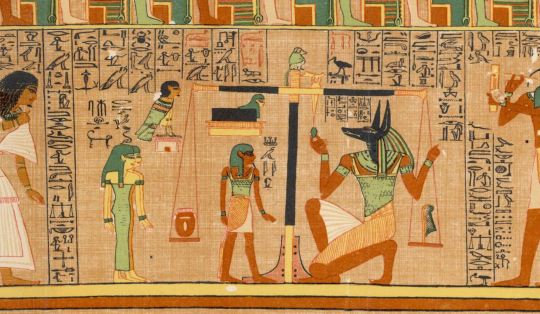
Anubis in the book of the dead (which was not actually a book)
Easily my favorite thing in all of ancient Egyptian mythology, Anubis (known by many other epithets, including but not at all limited to "Lord of the Sacred Land," "He Who is Upon his Sacred Mountain," "Master of Secrets," and "He Who is in the Place of Embalming”) is the god of the dead. He was the protector of graves, guardian of the dead, the shepherd of souls passing into the afterlife, and many more roles, including the ever-important Weighing of the Heart (as seen above), the results of which would dictate whether or not someone was allowed to enter the afterlife - or if their heart was devoured by the monster Ammit and their soul destroyed forever.
Anubis was depicted with the black head of a wolf. His head was colored black because black was the color associated with life, the life-giving soil of the Nile River, regeneration, and embalmed bodies, and he, of course, is also the god of mummification. Anubis is one of the single most important deities in all of ancient Egypt, depicted and mentioned very frequently, even more than most any other deity - however, despite this, there are almost no stories actually involving him.
But no, Anubis was not “evil,” as much of modern pop culture would have you believe! (Sorry The Mummy Returns, I love you to death, I really do - but it was super rude to make Anubis evil.)
Long story short, Anubis was freaking awesome, and there’s way too much to say about him and his awesomeness for just one post. Maybe I’ll do a separate post all about him later, because he’s a personal obsession of mine.
Anubis’s brother (at least, he is considered to be this by some) was the god Wepwawet, another wolf-headed deity. Wepwawet was a man with a white or grey head of a wolf (though some think he may have also had a black head like Anubis, but others claim that is not the cause and the coloring was on purpose as we have seen it in too many different places - still more claim it was just the artist’s preference; it’s hard to know any of these things for sure)...
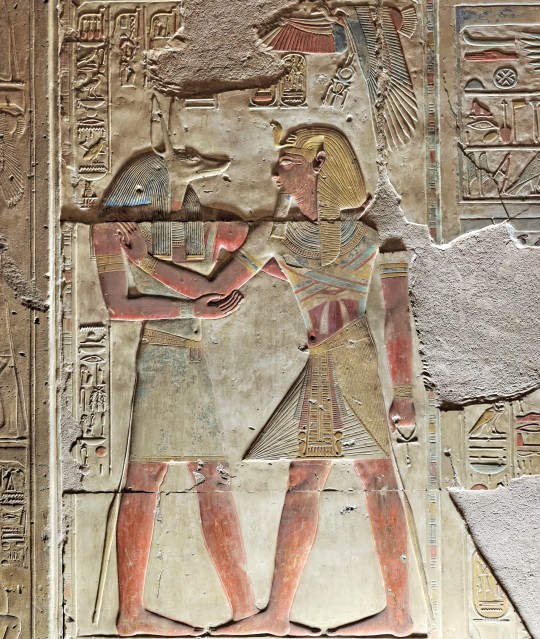
Wepwawet with Pharaoh Seti I (try not to read that in Ardeth Bay’s voice, I dare you. I don’t know why you wouldn’t want to, though)
Like basically all deities of ancient Egypt, Wepwawet is a complicated god, a deity involved in some funerary rites, but especially associated with war and royalty. Wepwawet means “opener of the ways,” and he was depicted as a man with the head of a grey or white wolf, as well as wolf at the prow of a solar boat, sometimes said to lead armies, to scout, and even to have the honor of going before the pharaoh himself. He is also known by the title “one with sharp arrows more powerful than the gods.”
A very important god, Wepwawet is one of the oldest gods of Egypt ever recorded, and he was always associated directly with royalty and specially the pharaoh. He was said to accompany the pharaoh on his hunts, as well as protecting the pharaoh in life and the afterlife - he is a symbol of divinity of rule and of kings in general. He is, for certain, a very good deity, rather than some kind of evil wolf of Western literature.
And lastly among the prominent wolf-headed deities, we have one of the four sons of Horus, Duamutef...
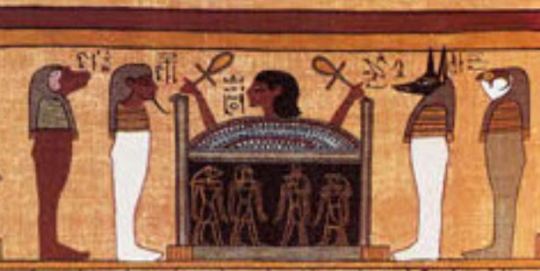
The four sons of Horus were depicted upon the canopic jars (jars containing certain organs of the mummified dead) starting in the First Intermediate Period of Egyptian history, which was around 2181-2055 BC. Each deity protected a different important organ; Duamutef, the wolf-headed god, always protected the stomach and represented the direction of the east. Please note he was not always depicted with a black head like Anubis; sometimes he also had a white or grey head. It varied. Likewise, in later periods, the forms of these various gods were sometimes mixed up, and a different son of Horus would have the wolf head. These deities were depicted not only on the canopic jars, but also on many other funerary artifacts, including the sarcophagi that would contain the jars.
So we have all these wolf-headed deities... but does any of this tie into werewolves at all?
Well, it doesn’t, really. There seems to be no indication that Anubis, Wepwawet, Duamutef, or anyone else did any particular shapeshifting, and they certainly weren’t cursed. They were gods. Anubis and Wepwawet are both sometimes depicted as simply a wolf as opposed to a wolf-headed man - as many of the Egyptian gods are depicted as their animal counterparts, including Ra, Horus, Hathor, Sobek, and many, many others - but that’s merely his animal aspect counterpart. Depictions and aspects of the gods of ancient Egypt (and also, later, how Rome and Egypt intermingled some of their deities during the Roman occupation, such as Hermanubis) are extremely in-depth topics. I’ve always loved studying them, but they are immensely complicated - certainly far too complicated for this post! So let’s get back to the matter at hand...
I’ll be honest, I have yet to find a credibly-sourced legend that talks about anything like an ancient Egyptian “werewolf.” I’m pretty darn sure they didn’t have anything remotely like what we consider among actual werewolf legends, my friends, and especially none that meet my personal criteria. The ancient Greeks, however, absolutely did, as you probably know if you’ve spent time browsing my werewolf facts masterlist (link at the bottom of this post!).
Wolf-headed gods, however - yes, they definitely had those, and no, they were not “evil gods.” In fact, some of them were very highly revered and associated directly with necessary aspects of life and death, as well as with pharaohs.
Speaking of, if you love ancient Egypt (and also adventure movies), you should absolutely check out my new novella that came out just this past June - Wulfgard: The Tomb of Ankhu!
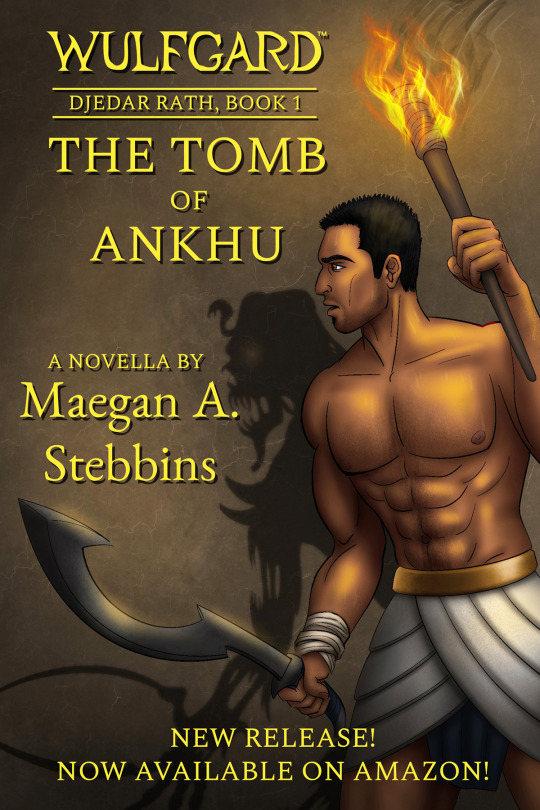
It is the first of two short novellas that tell an exciting tale about adventure, an ancient curse, mummies, memorable characters, and last but not least lots of Anubis and other legends, all of it set in the vast ancient-medieval dark age fantasy realm of Wulfgard: a world where all myths are true.
Every book release means the world to me, and this one is no different. I’m very proud of this story, and I really think you’ll enjoy it.
Deep in the southernmost deserts of Wulfgard lies the resting place of Pharaoh Ankhu the Endless, one of the greatest evils the land of Kemhet, or the world, has ever known. So terrible was his power that the gods themselves cursed him, sealing him away in an underground labyrinth. Ankhu rises with each darkening of the moon, a walking mummy, wandering this tomb in search of his own still-beating heart, without which he can never reach the afterlife.
Over untold ages, Ankhu’s tomb remained undiscovered, a secret protected always by the loyal Medjai, an order sworn to guard Kemhet from all threats. And now, a new threat has arisen: Lord Tefnahkt the Red, a powerful warlock, drives his cult and his many slaves to uncover Pharaoh Ankhu’s resting place and steal the mummy's power.
While a small group of Medjai desperately work to stop Tefnahkt’s plans, one slave may become the key to putting an end to this evil once and for all: Djedar Rath. In a race against time, Djedar must lead the Medjai to prevent Tefnahkt from opening the tomb of Ankhu before the coming of the new moon, when the undead Pharaoh will awaken once more. For, if Ankhu escapes, the world will never survive his wrath.
Inspired heavily by real-world ancient Egyptian and other mythologies - but with many original additions and elements - as well as the classic character-driven adventure genre that mixes aspects of action, thriller, and horror, with a tasteful sprinkling of levity, The Tomb of Ankhu is a tale of non-stop adventure and excitement that will leave you on the edge of your seat! Now available in ebook and paperback!
Go here to purchase on Amazon! https://www.amazon.com/dp/B0C8897R1K
Readers have been really enjoying this one! The second one has been in the works for quite some time already, so expect news about that in the coming months, as well.
Hope you enjoyed the werewolf fact this month, even if it was kind of more a wolf fact. But, myself, I have spent my entire life captivated by ancient Egypt, so I love this kind of stuff.
Thanks for reading, and until next time!
( If you like my werewolf blog, be sure to follow me here and check out my other stuff! Please consider supporting me on Patreon or donating on Ko-fi if you’d like to see me continue my works, including my folklore blog and writing my own novels, werewolf and otherwise. Every little bit helps so much.
Patreon — Personal Website (new and improved! Great starting point!) — Ko-fi — Wulfgard — Werewolf Fact Masterlist — Twitter — Vampire Fact Masterlist )
#werewolf#werewolves#werewolf fact#werewolf wednesday#werewolfwednesday#werewolf facts#folklore#folklore facts#mythology#mythology facts#ancient egypt#egypt#egyptian#ancient egyptian#anubis#wepwawet#wolf gods#wolf mythology#wolves#wolf#legend#legends#ancient world#osiris#ancient egyptian gods#egyptian gods#long post#research#lykos#jackal
81 notes
·
View notes
Text

This is where the old gods ruled.
Nameless gods of the trees, the wolves, and the snow.
#loki#lokean#pagan#norse paganism#old gods and the dark woods#old gods#dark woods#dark forest#dark gods#forest gods#asoiaf#forest witch#wolf gods#blood sacrifice#my art#digital drawing
19 notes
·
View notes
Text
APOLLO LYKAIOS, the Blue-Eyed Beast

There was a ‘dark’ underground and background to the ‘god of light.’ This claim plainly contradicts the received opinion about Apollo, the Greek god who was pushed farthest of all into the realm of the ‘bright’ and the ‘spiritual.’ It removes him from the unfruitful antinomy of the pair of opposites, ‘Apollonian’ and ‘Dionysian.’ It also confirms the ambivalence which Thomas Mann seems to feel in his urge to identify origins: ‘Who can say where the stories originated, above or below?’ (Christa Wolf)

"And you, Apollo, lord of the Wolf, be a wolf to the enemy force and give them groan for groan!" (Aeschylus)

The epithet Lykaios/Lyceus shows Apollo as protector and master of wolves (λύκοι). For example, the god Apollo Lykaios was invoked to ward off enemies. And as an averter of evil, he protects herds, flocks and the young. We can see some parallels to the divine/protective role of wolves in other cultures, for example in Japan. (Ralph Haeussler)

#legend of zelda#zelda#twilight princess#wolf link#hero's shade#golden wolf#twilight#oot link#apollo#greek gods#greek mythology#lykaios#wolf#christa wolf#cassandra#gods#totemism#wolf gods#thomas mann
9 notes
·
View notes
Text
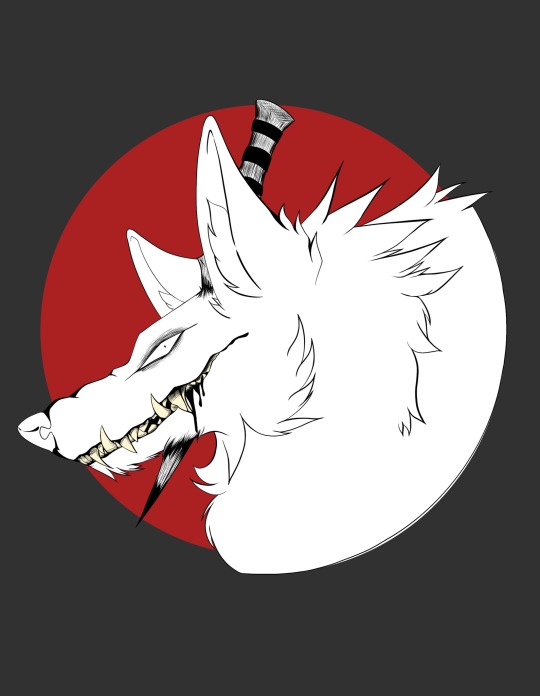

Aren’t they a couple of cuties 🥰
The god protectors don’t fuck around in my world, they’re massive and all have a specific blade in their heads.
#wolves#drawing#artwork#original character#oc#draw#art#wolf#wolf drawing#worldbuilding#my world#wolf gods#I fucking love them
8 notes
·
View notes
Text

This is where the old gods rule.
Nameless gods of the tree, the wolves, and the snow
#dark forest#weirwood#direwolf#wolves#wolf#dark woods#black forest#paganism#old gods#dark gods#pagan gods#forest#forest gods#wolf gods#asoiaf#my art#digital art#old gods and the dark woods
2 notes
·
View notes
Text

🌌🌫🔥🌒🐺☀️🐺🌘🐺🔥🌫✨
#Keepers Of The Universe By Jonas Jodicke#Inner Fight By Jonas Jodicke#Cosmic#Celestial#Fire#Smoke#Fog#Sun#Moon#Crescent Moon#Wolf#Wolves#Wolf God#Wolf Gods#Trinity#Divine#Deity#Magical Creatures#Mystical Creatures#Supernatural Creatures#Magic#Magical#Mystical#Supernatural#Art#App#Adult Colouring Book#Adult Coloring Book#Tap Color - Color By Number#My Post
5 notes
·
View notes
Text

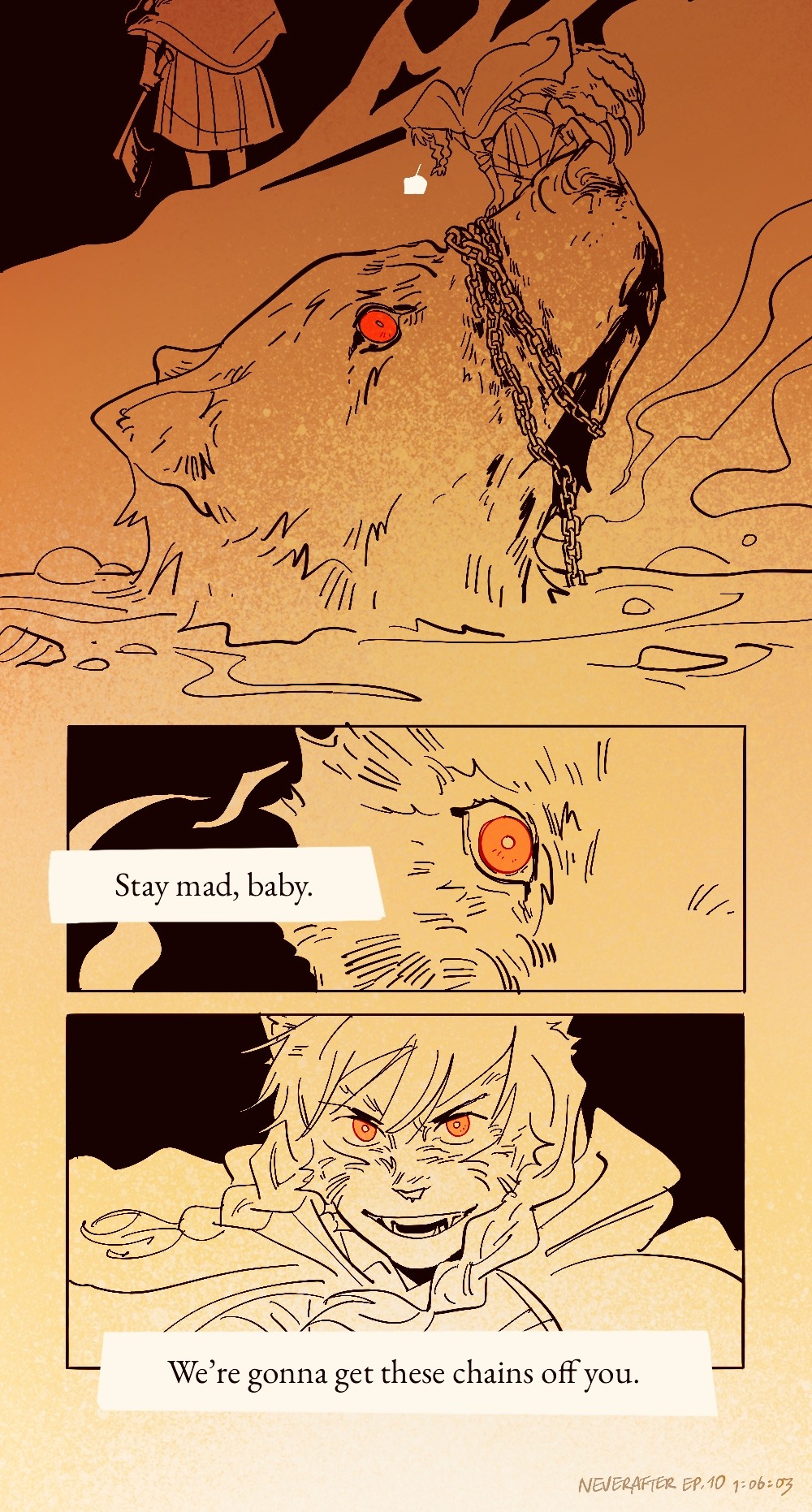
This is death itself. This is the biggest and baddest thing in all of fairy tale, and you want to set it free.
#dimension 20#dimension 20 spoilers#neverafter#neverafter spoilers#ylfa snorgelsson#little red#big bad wolf#from one wolf to another!#heavily referencing moro from mononoke hime in the first page#i think i pulled a muscle in my shoulder#from drawing those god damn chains lol#fanart#my art#okay i'm really done! is it wednesday yet#(technically it's thursdays for me because of timezones but anyway)
37K notes
·
View notes
Text
Forbidden Wolf Conri's Story
Conri woke from his slumber to the screams of his followers, the maniacal laughter of his sister Sedna, and the booming thunder of Aspen's voice as he tried to reason with the bane of the Moon God's existence.
That was when Conri heard his sister speak harshly and unfeelingly "Fangs and hunger grow for blood, night is your forever home now." As the last words were spoken Conri saw his worshipers shift and writhe in pain as their fangs grew past their lips and a hunger for blood pooled within them.
He thought the curse of vampirism was a myth, but after seeing his followers he knew he had to protect them. So he ran to his sister and grabbed her by the scruff of her neck and bit down hard ripping off a large chunk of fur and skin, and blood started to pool. Causing Sedna to howl in shock as Conri threw her into a large cluster of stones.
"Never touch my followers again or you will regret it!" Conri yelled at his sister, but out of the corner of his eye he could see Aspen leading his followers away from them, as Sedna just laughed "What could you possibly do to me, little brother?"
Conri let out a low growl as he leaped forward and sunk his teeth and claws into Sedna ripping fur and flesh from bone. Sedna just laughed at his efforts "Little brother will you quit it? It won't help you and your bites and scratches don't bother me." Conri growls, sinking his teeth deeper into his sister's flesh. The horrid taste of her blood seeped deep into his soul. The taste could be described as year-old rotten caribou meat and rancid fruit. But Conri kept his hold on his monster of a sister.
Chapter Two
Sedna tossed the moon God off of her and cackled like someone gone mad. Conri struggled to get up as Sedna held him still with a paw to his throat as she stared into the eyes of Aspen who had just returned "It didn't have to be this way you know. Sedna's words were ones built of fire and ash as she chuckled lowly "You could have chosen any one of the goddesses Aspen, but you chose my weak, pathetic brother. So now I give you a choice." Sedna pressed her paw harder against Conri's throat causing him to choke making sure Aspen watched as the light drained from his love's eyes, "What is the point you monster!?!? You attacked Conri's followers unprovoked, and now you're trying to kill him. You are no longer a goddess Sedna, you are hereby banished from this place and our sacred realm." Aspen yelled, causing Sedna to back away from her brother and growl at the god of war "You can't banish me! Only the king can." She growled as she scratched Aspen's face blood dripped from her claws. The god of war stood firm chuckling to himself as he spoke the spell that wrapped chains of fire around Sedna and dragged her to her new prison, as blazing as her anger and cruel acts.
As Aspen helped Conri to his feet he looked him over, and seeing the burns, scratches, and bites on him caused Aspen to whimper. He licked Conri's cheek his eyes shining with love and slight pain, "I wish I could have stopped her sooner. I'm sorry." Conri whispered. Aspen rested his paw on his love's "I know but we didn't have the spell then and we didn't have a solid reason to banish her, but we finally got rid of her for now." Aspen said softly as he lead Conri to their den so they could try and rest before telling the others.
0 notes
Text

Theyre like .2 seconds away from getting yelled at for sitting on some zombies grave
#god theyre so in love and i drew this so incredibly im so impressed with myself#and also kinda obsessed with them#monster high#toradeen#mh g3#toralei stripe#clawdeen wolf#im also currently obsessed with refresh clawdeen people just dont get her#shes so beautiful to me#my art#fanart
4K notes
·
View notes
Text
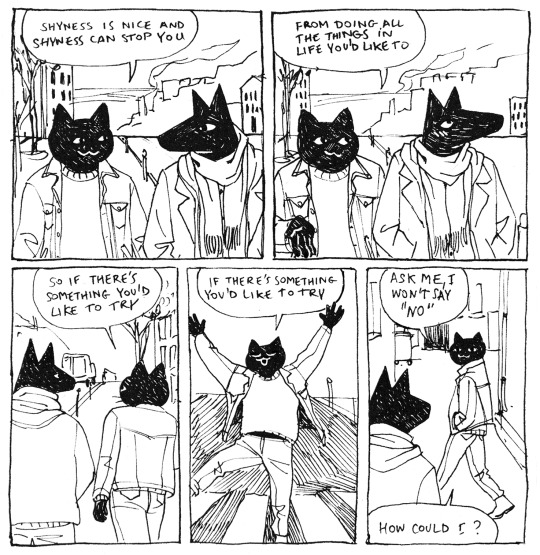
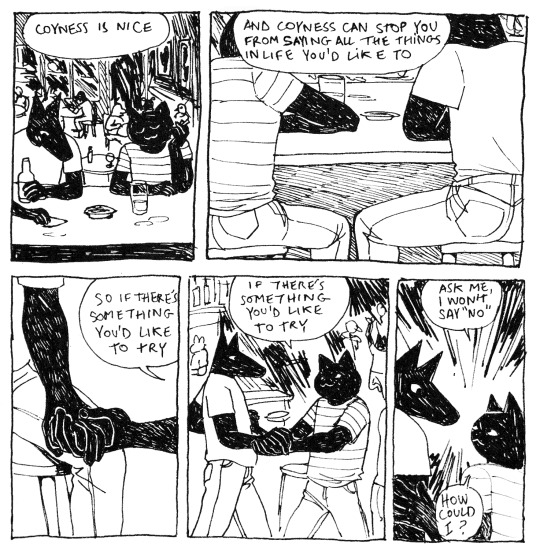
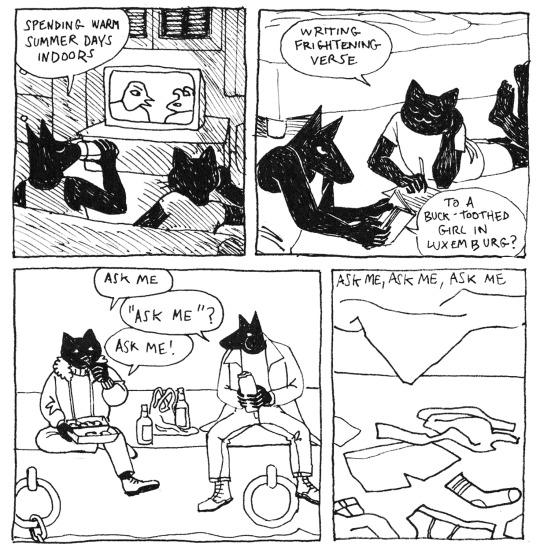
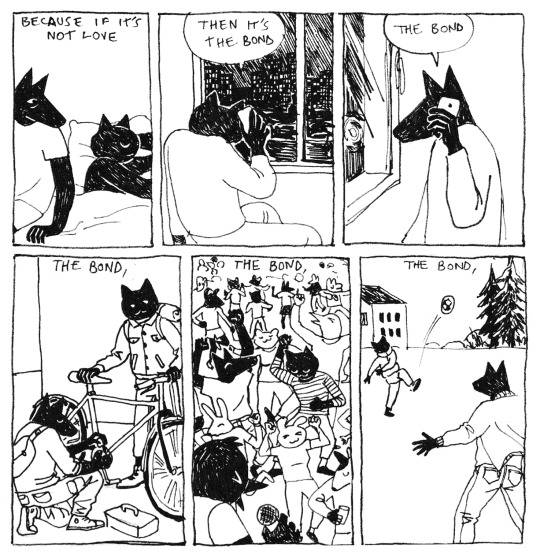

a comic about love and friendship and the power of communication, inspired by that time i heard ask by the smiths on my run and was somehow moved to tears
(i misheard 'the bomb' as 'the bond' but i stand by it. i don't value morrissey enough to respect his authorial intent)
(sensitive wolf fans smash that mf like button!!!!)
#you don't have to smash it's ok#i drew this to make me feel better about a painful friend breakup/real breakup#it did not work but that was months ago and i'm fine now#god tumblr is the perfect place for this comic.... beautiful#my art#sensitive wolf
19K notes
·
View notes
Text

The bloodied moon cried for you, but you only heard the stars
The weeping moon then bled for you, but you only saw her scars
#I was too motivated to draw this to not outright finish it. More Pearl art upon ye god. oops! All Pearl!#pearlescentmoon#pearlescentmoon fanart#trafficblr#tilly#double life fanart#the blood seeping from the moon is turning her fit scarlet <3#cw blood#wolf + moon + Pearl imagery... too good to pass up on#god so ill#SO ILL#I LOVE DRAWING ANIMALS SO MUCH#GUYS I LOVE IT SO MUCH#WOLVES. WOLVES!!!!#Wolves are overrated and I like most animals more than that but THEYRE STILL FUN TO DRAW#sorry I wrote the. little poem thing wrong so I privated this for a bit teehee Im a failure#tubby art
3K notes
·
View notes
Text
and ik discovering the fanfic sex pollen effect of the sephora spider sex cream must've been traumatizing but this is much funnier than the lemonade that just kills you
#spider man fanfics about to go hard#it's just such a funny rabbit hole#go to the Sephora Reddit and you can find the posts all about it yourself you can't miss em#it's one of the sol de janieo ones btw#so if you live in an area with wolf spiders and you use the purple one please tell us your experiences#sephora spider sex cream#Submit yourselves‚ then‚ to God. Resist the devil‚ and he will flee from queue. Hashtag girlboss#panera lemonade#Sephora#spiders mention#spiders georg#srsly tho as someone with hyperthyroidism and likes lemonade I was Shaken when I heard abt Panera's charged lemonade
2K notes
·
View notes
Photo
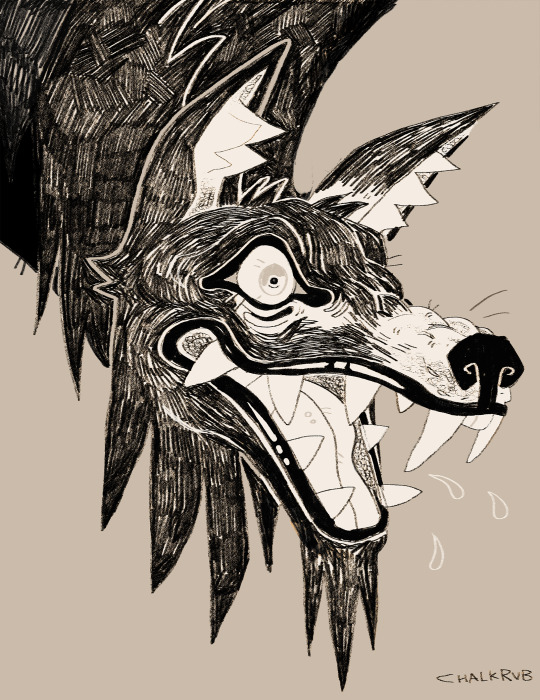
do you think it’s a friendly wolf
#my art#werewolf#anthro#furry#wolf#oc#els#illustration#the answer is NO but we should also remember looks can be deceiving#guys i accidentally started buying pokemon cards again. i'm never going to financially recover from this#but have you seen the crown zenith subset with full art cards of underappreciated pokemon....did you see....I NEED it#i haven't brought ANY cards since early sun/moon and even then it was just a little collector's box because i wanted the arceus pin/promo#please god forgive me for spending money on pokemon cards again PLEASE#i'm your weakest soldier anud i require your strongest card pulls so i can get simisear vstar thank you amen#and also bibarel thievul lumineon and miltank thank you amen#GRAAAAAGAGHHH WHY DID I SPEND SO MUCH MONEY ON PIECES OF CARD I'M NOT RIGHT IN THE HEAD!!!!#monster art
5K notes
·
View notes
Text
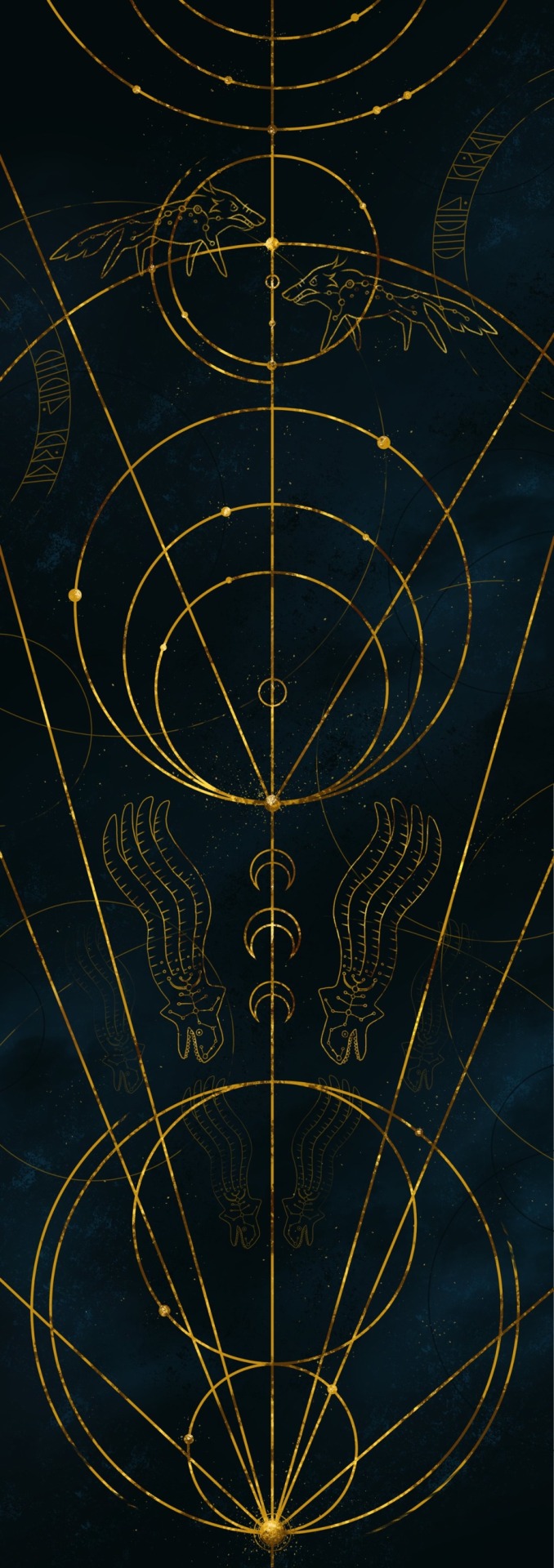
Star map inspired by Ahsoka’s ending credits
#you all have no idea how much I love those Star Wars maps#the circles planets lines designs catch my eyes so easily#I have one pattern tattooed on my arm inspired by Jedi Fallen Order art book cover#so when I first saw Ahsoka’s ending I was over the moon#and with that music??? God I’m totally sold#my art#ahsoka#star wars#purrgil#loth wolf#star map
2K notes
·
View notes
Text








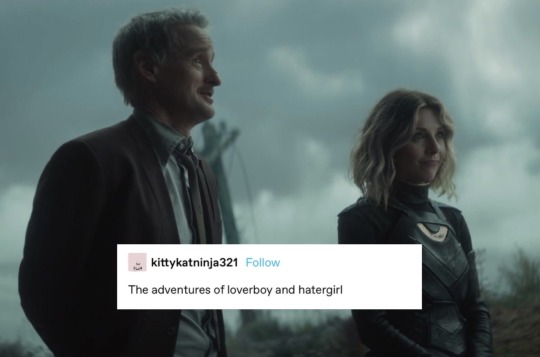

This is how I’m coping ok. It’s ok.
#loki series#loki season 2#loki spoilers#lokius#loki#loki laufeyson#mobius m mobius#mobius#sylvie#sylvie laufeydottir#quotes#incorrect quotes#text post#loki god of stories#brad wolfe#hunter x 5#hunter b 15#the tva#tva loki#sylki#kinda#mcu#mcu loki#sylvie x mobius
2K notes
·
View notes
Text
It's late, but then again it always is.
I'm kneeling on the ground and my knees are damp from the grass.
In front of me in a great tree, with a wide trunk and strong limbs that reach up high into the night sky. A face is carved into it, impassive and ever watching
But at the base, nestled in the roots right infroon of me is the skull of a wolf, it's bottom jaw missing and the bone bleached white from its time in the sun and the elements.
I set a candle of black beeswax upon it, and light it.
I cut myself and let my blood drip over its teeth and down to the trees roots.
And I bow my head, and let myself reflect as I drift somewhere between consciousness.
It's peaceful.
#weirwood#dark forest#forest gods#black forest#old gods and the dark woods#dark gods#wolf gods#pagan gods#paganism#wolf#dark woods#wolves#wolf skull#sacrifice
0 notes